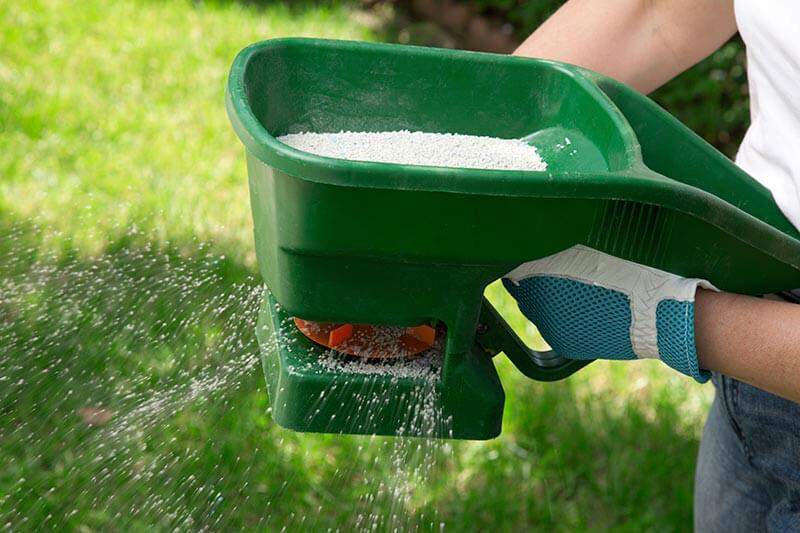Fertilising your lawn or garden is essential for maintaining healthy, vibrant plants. However, applying fertiliser unevenly can lead to patchy growth and wasted product. This is where a fertiliser spreader becomes invaluable. But there are many kinds, so how do you pick the right one?
There are a few important things you should think about when choosing a fertiliser spreader. Keep reading to learn more.
Types of Fertiliser Spreaders
1. Broadcast Spreaders
It’s easy to quickly cover large areas with rotating spreaders, also called broadcast spreaders. They work because they spread fertiliser out in a wide arc, which makes it easy to cover a lot of ground. When working in small spaces, like flower beds, these spreaders might not be as accurate, but they do great on fields and large landscapes.
2. Drop Spreaders
Drop spreader design is all about accuracy. They make the spread of manure more even and controlled by letting it out just below the spreader. This type works best on smaller lawns, gardens, and areas where you don’t want fertilizer on the driveways or paths. But each pass doesn’t cover as much ground as a scatter spreader does.
3. Handheld Spreaders
Spreaders that you hold in your hand are small, light, and easy to use. Smaller gardens, spot treatments, and places that bigger spreaders can’t reach are all good places for these spreaders to work. Even though they are useful, they aren’t always as consistent in how they’re used and require more physical work than bigger options.
4. Tow-Behind Spreaders
Attached to the back of lawn tractors or ATVs, tow-behind spreaders are great for large homes. With the reach of broadcast spreaders and the ease of a tow-behind attachment, they make it easier to fertilise big areas. Having said that, they won’t work as well in small yards and parks.
Key Factors to Consider
1. Size of the Area
It is important to think about how big your lawn or yard is when choosing a spreader. Drop or mobile spreaders are better for smaller areas, while broadcast or tow-behind spreaders work better for bigger ones.
2. Type of Fertiliser
You might need to buy special spreaders for different types of fertilizer to get the most out of them. Spreaders made for granular fertilizers should work fine, but spreaders made for liquid fertilizers might need more modern equipment. Make sure the fertilizer works with the spreader before you use it.
3. Precision vs. Coverage
Think about whether you need a specific application or a wider one. Many people find that a drop spreader is the best way to avoid overspreading because it gives them more control and accuracy. Broadcast spreaders, on the other hand, cover more ground more quickly but less accurately.
4. Ease of Use
Another crucial aspect is how easy it is to use. When working on smaller areas, handheld spreaders are easy and practical, but when working on larger areas, tow-behind spreaders are more complicated but greatly minimize the need for manual labor. Think about how much work your lawn or garden will require and your physical abilities before purchasing a spreader.
5. Budget
Your choice will also be affected by your budget. In comparison to broadcast and tow-behind spreaders, handheld and drop spreaders tend to be more budget-friendly. Think about the region you need to cover and the long-term investment before making a selection.
6. Weather Conditions
Fertiliser application can be influenced by weather conditions. Wet or windy conditions can lead to uneven distribution, especially with broadcast spreaders. Choose a day with calm weather and moderate temperatures for best results. Additionally, some spreaders are better suited for certain climates and terrains, so consider the typical weather conditions in your area.
7. Storage and Maintenance
Proper storage and maintenance are crucial for the longevity of your spreader. Look for models that are easy to disassemble and clean. Storing your spreader in a dry place will prevent rust and wear. Regularly check for any worn-out parts and replace them as needed to ensure consistent performance.
Tips for Using Fertiliser Spreaders
- Calibration: Always calibrate your spreader before use to ensure accurate fertiliser application. Follow the manufacturer’s instructions for the best results.
- Maintenance: Regularly clean and maintain your spreader to extend its lifespan. Remove any residual fertiliser after each use to prevent corrosion and clogs.
- Even Distribution: Overlap your passes slightly to ensure even coverage and avoid missed spots or over-fertilisation.
Choose the Best Fertiliser Spreader for Your Needs
Your lawn or garden’s health and beauty can be greatly improved by choosing the correct fertiliser spreader. You may discover a spreader that works for you by thinking about several factors. Consider the area you need to cover, the fertilizer you’re using, its precision, ease of usage, and budget.
The correct gear, be it a broadcast spreader for expansive lawns or a drop spreader for targeted treatments, will allow you to attain a verdant, fertilized garden. To get the most out of your fertiliser spreader and keep it running smoothly for a long time, make sure to follow the recommended procedures for calibration and maintenance.
Keep an eye for more latest news & updates on Web of Buzz!




